#sternberg press
Text

For almost 50 years, Brazilian-born New York–based artist Lydia Okumura (b. 1948), like her contemporaries Dorothea Rockburne and Robert Irwin, has explored the realm of geometric abstraction by challenging our perception of space in her sculptures, installations, and works on paper. In the 1970s, as a young artist in her native São Paulo, she was introduced to Conceptual art, Minimalism, Land Art, and Arte Povera through the Japanese art magazine Bijutsu Techou. These movements, along with Brazilian Concretism and Neoconcretism, influenced Okumura’s dynamic work in which she uses simple materials such as string, glass and paint to balance line, plane and shadow.
This handsome exhibition catalog, produced to accompany the artist’s first solo exhibition in the United States at the University of Buffalo Art Gallery and to encourage a critical reassessment of Okumura’s oeuvre within art history, is a rich document of her minimal practice and independent vision. The catalog includes an essay on Okumura and her work by curator Rachel Adams; an account of vanguardism in Brazilian art from 1960 to 1975 by art historian Mari Rodriguez Binnie; a conversation between Adams and Okumura; and extensive photo documentation of Okumura’s work from the 1970s until today.
Edited by Rachel Adams & Charlie Tatum
Designed by Mark Owens with Sarah Cleeremans
Published by Sternberg Press and the UB Art Galleries
Printed in an edition of 1,200 copies
In English and Portuguese
Softcover, 112 pages, 48 b&w and 56 color images, 9.5 × 11.5 inches
ISBN: 978-3-95679-291-5
#Lydia Okumur#art book#artist book#Brazilian artist#exhibition catalog#Mark Owens#Sternberg Press#female* artist#sculpture book#Draw Down Books
15 notes
·
View notes
Photo



Tainted Love: From Nina Simone to Kendrick Lamar. Alex Coles’ work on “twisted love” songs.
https://mitpress.mit.edu/9783956796586/tainted-love/
https://mitpress.mit.edu/9781915609083/pidginization-as-curatorial-method/
https://mitpress.mit.edu/9783956795312/curating-the-complex-and-the-open-strike/
#Tainted Love: from Nina Simone to Kendrick Lamar#Pidginzation as Curatorial Method: Messing with Languages and Praxes of Curating#Curating the Complex and the Open Strike#MIT Press#Sternberg Press
0 notes
Text

From Nathalie Du Pasquier’s RO-SÉ – A Book as a Bridge
Sternberg Press 2022
0 notes
Text
Evelyn Preer

Evelyn Preer (née Jarvis; July 26, 1896 – November 17, 1932), was an African American pioneering screen and stage actress, and jazz and blues singer in Hollywood during the late-1910s through the early 1930s. Preer was known within the Black community as "The First Lady of the Screen."
She was the first Black actress to earn celebrity and popularity. She appeared in ground-breaking films and stage productions, such as the first play by a black playwright to be produced on Broadway, and the first New York–style production with a black cast in California in 1928, in a revival of a play adapted from Somerset Maugham's Rain.
Evelyn Jarvis was born in Vicksburg, Mississippi, on July 26, 1896. After her father, Frank, died prematurely, she moved with her mother, Blanche, and her three other siblings to Chicago, Illinois. She completed grammar school and high school in Chicago. Her early experiences in vaudeville and "street preaching" with her mother are what jump-started her acting career. Preer married Frank Preer on January 16, 1915, in Chicago.
At the age of 23, Preer's first film role was in Oscar Micheaux's 1919 debut film The Homesteader, in which she played Orlean. Preer was promoted by Micheaux as his leading actress with a steady tour of personal appearances and a publicity campaign, she was one of the first African American women to become a star to the black community. She also acted in Micheaux's Within Our Gates (1920), in which she plays Sylvia Landry, a teacher who needs to raise money to save her school. Still from the 1919 Oscar Micheaux film Within Our Gates.
In 1920, Preer joined The Lafayette Players a theatrical stock company in Chicago that was founded in 1915 by Anita Bush, a pioneering stage and film actress known as “The Little Mother of Black Drama". Bush and her troupe toured the US to bring legitimate theatre to black audiences at a time when theaters were racially segregated by law in the South, and often by custom in the North and the interest of vaudeville was fading. The Lafayette Players brought drama to black audiences, which caused it to flourish until its end during the Great Depression.
She continued her career by starring in 19 films. Micheaux developed many of his subsequent films to showcase Preer's versatility. These included The Brute (1920), The Gunsaulus Mystery (1921), Deceit (1923), Birthright (1924), The Devil’s Disciple (1926), The Conjure Woman (1926) and The Spider's Web (1926). Preer had her talkie debut in the race musical Georgia Rose (1930). In 1931, she performed with Sylvia Sidney in the film Ladies of the Big House. Her final film performance was as Lola, a prostitute, in Josef von Sternberg's 1932 film Blonde Venus, with Cary Grant and Marlene Dietrich. Preer was lauded by both the black and white press for her ability to continually succeed in ever more challenging roles, "...her roles ran the gamut from villain to heroine an attribute that many black actresses who worked in Hollywood cinema history did not have the privilege or luxury to enjoy." Only her film by Micheaux and three shorts survive. She was known for refusing to play roles that she believed demeaned African Americans.
By the mid-1920s, Preer began garnering attention from the white press, and she began to appear in crossover films and stage parts. In 1923, she acted in the Ethiopian Art Theatre's production of The Chip Woman's Fortune by Willis Richardson. This was the first dramatic play by an African-American playwright to be produced on Broadway, and it lasted two weeks. She met her second husband, Edward Thompson, when they were both acting with the Lafayette Players in Chicago. They married February 4, 1924, in Williamson County, Tennessee. In 1926, Preer appeared on Broadway in David Belasco’s production of Lulu Belle. Preer supported and understudied Lenore Ulric in the leading role of Edward Sheldon's drama of a Harlem prostitute. She garnered acclaim in Sadie Thompson in a West Coast revival of Somerset Maugham’s play about a fallen woman.
She rejoined the Lafayette Players for that production in their first show in Los Angeles at the Lincoln Center. Under the leadership of Robert Levy, Preer and her colleagues performed in the first New York–style play featuring black players to be produced in California. That year, she also appeared in Rain, a play adapted from Maugham's short story by the same name.
Preer also sang in cabaret and musical theater where she was occasionally backed by such diverse musicians as Duke Ellington and Red Nichols early in their careers. Preer was regarded by many as the greatest actress of her time.
Developing post-childbirth complications, Preer died of pneumonia on November 17, 1932, in Los Angeles at the age of 36. Her husband continued as a popular leading man and "heavy" in numerous race films throughout the 1930s and 1940s, and died in 1960.
Their daughter Edeve Thompson converted to Catholicism as a teenager. She later entered the Sisters of St. Francis of Oldenburg, Indiana, where she became known as Sister Francesca Thompson, O.S.F., and became an academic, teaching at both Marian University in Indiana and Fordham University in New York City.
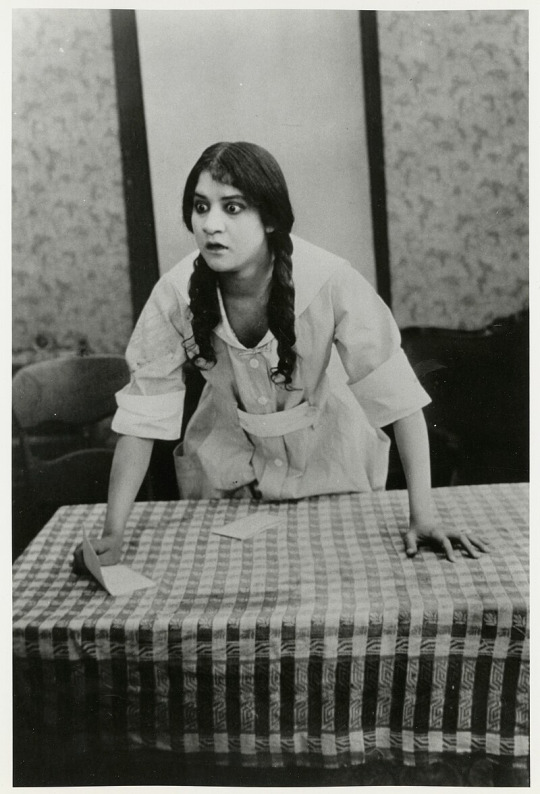
Still from the 1919 Oscar Micheaux film Within Our Gates.
60 notes
·
View notes
Photo

Tensta Museum: Reports from New Sweden, edited by Maria Lind, Sternberg Press, 2021. Design by Metahaven. The New Model: An Inquiry. Tensta konsthall, edited by Maria Lind and Lars Bang Larsen, Sternberg Press, 2020. Design by Metahaven.
Links: https://www.sternberg-press.com/product/tensta-museum/; https://www.sternberg-press.com/product/the-new-model/
171 notes
·
View notes
Photo










RO-SE’ A Book as a Bridge
Nathalie Du Pasquier
edited by Luca Lo Pinto
Sternberg Press, London 2022, 176 pages, 160 color ill., 21 x 30 cm, paperback, English/Italian,ISBN 978-3956796340
euro 36,00
A hybrid monograph/artist book of Nathalie Du Pasquier’s work.
Published on the occasion of Nathalie Du Pasquier’s solo show at MACRO (Museum of Contemporary Art of Rome), which will travel to the MRAC (Musée Régional d'Art Contemporain Occitanie/Pyrénées-Méditerranée), this book navigates the space between an exhibition catalogue and the artist book with juxtapositions of photographs of Nathalie Du Pasquier’s works, installation views of the show at MACRO, and extracts from texts by various writers and figures fundamental for her practice. These come together to create an extension of the exhibition itself, in a form that channels the spirit of the show: the pages become exhibition spaces embracing associations and combinations allowing for a deeper understanding and exploration of Du Pasquier’s work, and her imagination at large.
RO-SÉ offers a glimpse into the possibilities offered by Du Pasquier's oeuvre, which can be approached, interpreted, and experienced from countless perspectives. It is the very vastness and variety of her work, and her inspirations, that make its exploration—and as a result, this publication—nonexhaustive. This publication is part of an ongoing study of her career and documents her exhibition at MACRO, “Campo di Marte,” Du Pasquier’s biggest show to date which brought together over one hundred paintings, sculptures, drawings, prints, and cabins, from the early 1980s to present day.
#Nathalie Du Pasquier#RO-SE'#contemporary art exhibition catalogue#MACRO Roma 2022#artist book#art monograph#designbooksmilano#fashionbooksmilano
11 notes
·
View notes
Text

In ‘Pidginization as Curatorial Method’ Dr Bonaventure Soh Bejeng Ndikung @bonaventurendikung explores how the practice of pidginisation can be used as a curatorial framework to communicate with audiences. Mostly anecdotal, Ndikung encourages the embracing of curatorial methodologies that sit outside a colonial lens. He collages existing sociopolitical, economic, ethical and spiritual concepts together to create a malleable and expansive way of curating.
Published by Sternberg Press as part of the ‘Thoughts on Curating’
2 notes
·
View notes
Photo
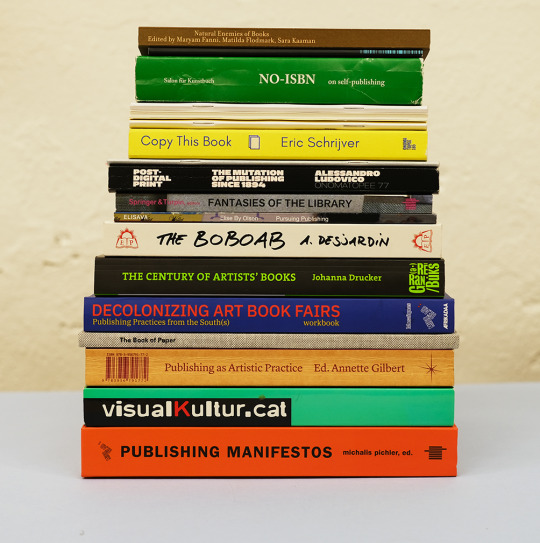




Publishing as Artistic Practice //
Some reads on the subject // Somewhere to get started // From top to bottom:
Books on publishing
Natural Enemies of Books // Edit. Maryam Fanni, Matilda Flodmark, Sara Kaaman // Funded by the Swedish Arts Grants Committee and through an artist-in-residence period at Grafikens Hus, in collaboration with the Södertälje Konstnärskrets.
Book to the future // Simon Worthington // Open Mute
NO-ISBN on self-publishing // Sylvie Boulanger, Ulises Carrión Edit. Bernhard Cella, Leo Findeisen, Agnes Blaha // Salon für Kunstbuch
Don’t rest, narrate // Rachel Withers, Nicholas John Jones // PRAKSIS, Fritt ord
Copy this book // Eric Schrijver // Onomatopee
What problems can Artist Publishers solve? // Temporary services / Printroom
Post-digital print – The mutation of publishing since 1894 // Alessandro Ludovic // Onomatopee
Fantasies of the library // Edit Anna-Sophie Springer, Etienne Turpin // The MIT Press
Pursuing Publishing // Elise By Olsen // Elisava
The BOBOAB (The Book on Books about Artists books) // Arnaud Desjardin // The Everyday Press,
The century of artists’ books // Johanna Drucker // Granary books
Decolonizing art book fairs – Publishing practices from the South(s) // Edit Yaiza Camps, Moritz Grünke, Pascale Obolo, Michalis Pichler, Parfait Tabapsi // Miss Read, Afrikadaa and Mosaïques
The book of paper // Oliver Helfrich, Antje Peters // Post editions
Publishing as artistic practice // Edit Annette Gilbert // Sternberg press
VisualKultur.cat // Edit Daniel Giralt-Miracle, Vicenc Altaio // ActarD Inc
Publishing manifestos // Edit Michalis Pichler // the MIT press
7 notes
·
View notes
Text
24 Days of La Fayette: December 11th - Jean-Louis and Jacques-Alexandre Romeuf
Jean-Louis Romeuf (and his younger brother Alexandre) have a special place on this list, because they are thus far La Fayette’s only aide-de-camps that served him during his commands in France. None of the two has ever been to America, neither during the War for Independence nor later on.
Jean-Louis Romeuf was born on September 27, 1766 to Barthélemy Romeuf. He had three brothers, Claude Romeuf, the oldest of the brothers, the l’Abbe Romeuf, the second oldest, who long served as the canon of the cathedral Saint-Flour, and Jacques-Alexandre. The Romeuf’s hailed, just like the La Fayette’s, from the Auvergne in France. It appears as if there had been more children and possible more brothers, but the book Nobiliaire d'Auvergne by Jean-Baptiste Bouillet served as my main source and only featured these four children.
Jean-Louis first entered the army in 1789 when he became an aide-de-camp to General la Fayette who had just been elected commander of the newly formed National Guard. Romeuf had been commissioned a captain in September of 1791 but continued on his current post until he left France alongside La Fayette and a number of other officers in 1792. He was among the unlucky man captured by the Austrians. Adrienne de La Fayette wrote a letter to George Washington in French on October 8, 1792. Tobias Lear translated the letter for Washington and John Dyson made three copies in French. One copy features a postscript that is not found in Lear’s translation or in one of Dyson’s other copies. It reads in parts:
Messr Maubourg, M. Bureau de Puzy et M. la Colombe qui a l’avantage d’avoir servi les Etats Unis meritent d’être distingués parmi les Compagnons d’infortune. Messrs Romeuf, Pillet, Masson, Curmeer les deux jeunes frères de M. Maubourg sont au nombre des Prisonniers, et ont tout le droit possible, à l’interêt le plus tendre par leur attachement à Monsr Lafayette depuis le commencement de la Revolution.
Endnotes of “To George Washington from the Marquise de Lafayette, 8 October 1792,” Founders Online, National Archives, [Original source: The Papers of George Washington, Presidential Series, vol. 11, 16 August 1792 – 15 January 1793, ed. Christine Sternberg Patrick. Charlottesville: University of Virginia Press, 2002, pp. 204–207.] (02/10/2022)
My translation:
Messr Maubourg, Mr. Bureau de Puzy and Mr. la Colombe who has the advantage of having served the United States deserve to be distinguished among the Companions in misfortune. Messrs Romeuf, Pillet, Masson, Curmeer the two young brothers of M. Maubourg are among the number of prisoners, and have every possible right, to the most tender interest by their attachment to Monsr Lafayette since the beginning of the Revolution.
While Jean-Louis Romeuf was imprisoned alongside La Fayette and some of the other officers, I struggle to determine the exact duration of his detention. It is possible that Romeuf even was held at Olmütz. He was however released long before La Fayette because Romeuf managed to play an important part in the Marquis’ release. Jules Germain Cloquet described the scene in his book:
Louis de Romeuf formerly, aide-de-camp to Lafayette, arrived, after some difficulty, from the army at Vienna. He had been sent by Generals Bonaparte and Clarke to have a direct explanation with the Baron de Thugut, the prime minister of Austria. After much negotiation, the minister at last consented to the liberation of the prisoners on condition “that the American consul at Hamburgh would promise to do his utmost to engage them to quit the territory belonging to the imperial jurisdiction within ten days after their arrival at Hamburgh, to which city they were to be escorted.“ Romeuf gave an account of his mission to Generals Bonaparte and Clarke, and also to the Director Barthélemy. He obtained the promise asked of the American consul and was at length enabled, after fresh difficulties to announce that on the 23d September 1797, Lafayette and his friends had been set at liberty.
Jules Germain Cloquet, Recollections of the Private Life of General Lafayette, Baldwin and Cradock, London, 1835, p. 58.
After La Fayette’s release, Romeuf spend the winter of 1797/98 with the La Fayette’s in exile in Danish-Holstein before returning to France. La Fayette rote to George Washington on August 20-21, 1798:
Among the friends who Can give me Minute information is My former Aid de Camp Louïs Romeuf who after Having past the winter with me is now in Bonaparte’s Staff.
“To George Washington from Lafayette, 20–21 August 1798,” Founders Online, National Archives, [Original source: The Papers of George Washington, Retirement Series, vol. 2, 2 January 1798 – 15 September 1798, ed. W. W. Abbot. Charlottesville: University Press of Virginia, 1998, pp. 539–545.] (02/10/2022)
When La Fayette returned to France, it was Jacques-Alexandre Romeuf in his turn, who helped his former General out. Virginie wrote in her book:
She [Adrienne] wished him [La Fayette] to return ere time had brought the slightest change, and without any other authorization than the liberal intentions then proclaimed by the new government. She obtained a passport for him under an assumed name, and M. Alexandre Romeuf one of his former aid de camps brought it to him.
Mme de Lasteyrie, Life of Madame de Lafayette, L. Techener, London, 1872, p. 381-382.
Jacques-Alexandre was born on November 19, 1772 and just like his brother joined La Fayette’s staff in 1790 as a capitaine aide-de-camp. He was not imprisoned along with La Fayette and his brother.
After the end of the French Revolution, the career of the two Romeuf brothers began to prosper. Jean-Louis participated in the expedition to Egypt with the rank of a Chef d’escadron and worked as an aide-de-camp to General Matthieu Dumas. He fought with the Army of the Reserve and served under Generals Brune and Macdonald. He then went on to serve under Maréchal Davoust in 1802 at Bruges and Boulongne as an adjutant-commander. Napoléon I created him Commander of the Legion of Honor and appointed him Governor General of the Duchy of Warsaw in 1808. In May of the same year, the King of Saxony awarded him the Order of Saint-Henri. He was created a baron in 1809 after the Battle of Regensburg. He was commissioned a Brigadier-General and worked as the Chief of Staff in the Army of Germany and then in the First Corps of the Grand Army, commanded by the prince of Eckmulh.
Jean-Louis Romeuf went with Napoléon I to Russia and was killed by a cannon ball during the Siege/Battle of Moscow on September 7, 1812.
La Fayette wrote to his friend Amé Thérèse Joseph Masclet Masclet on April 7, 1813:
The Russian campaign has been particularly fatal to me. You have no doubt shared my regret for the loss of my dear Louis Romeuf, -- a misfortune which I shall never cease to deplore. We have also lost my nephew Alfred Noailles, to whom I was attached by so many feelings and recollections. Victor Tracy has been taken prisoner, as well as my poor friend Boinville, who was obliged to undergo the amputation of all his toes. My cousin, Octave Ségur, was also taken prisoner at the commencement of the campaign.
Jules Germain Cloquet, Recollections of the Private Life of General Lafayette, Baldwin and Cradock, London, 1835, p. 41.
Since Jean-Louis was unmarried and childless, Napoléon I allowed that his titles were transferred to his oldest nephew, Jules Romeuf, the son of his brother Claude.
Jacques-Alexandre Romeuf joined the newly formed Army of Naples in 1806 as a Squadron-Commander and was chosen as his aide-de-camp by general Dumas. By 1807 he was Chief-of-Staff to General Donzelot and was awarded the Royal Order of the Two-Sicilies. In 1810 he was commissioned Adjutant-general and became a Commander of the Order of the Two Sicilies.
Joachim Murat chose Romeuf as his aide-de-camp to accompany him to Russia and so Jacques-Alexandre was with his brother Jean-Louis, when the latter died on September 7, 1812. On December 5, 1812, Jacques-Alexandre was named an Officer of the Legion of Honor. He left the Army of Naples in 1814 and returned to France. He was made Chevalier de Saint Louis on August 20, 1814 by the government of the First Restauration and quitted the army on September 9, 1814.
Just like his brother, he was made a baron, but this time by King Louis XVIII in 1817. It was also King Louis XVIII who appointed Romeuf as a Commander of the Legion of Honor.
Unlike his brother, Jacques-Alexandre had married, a woman by the name of Françoise Gosselin. The couple had one surviving son. Romeuf died on April 26, 1845 in Paris.
Jacque-Alexandre’s Acte de Décès is in the État civil reconstitué (XVIe-1859) of the city of Paris:
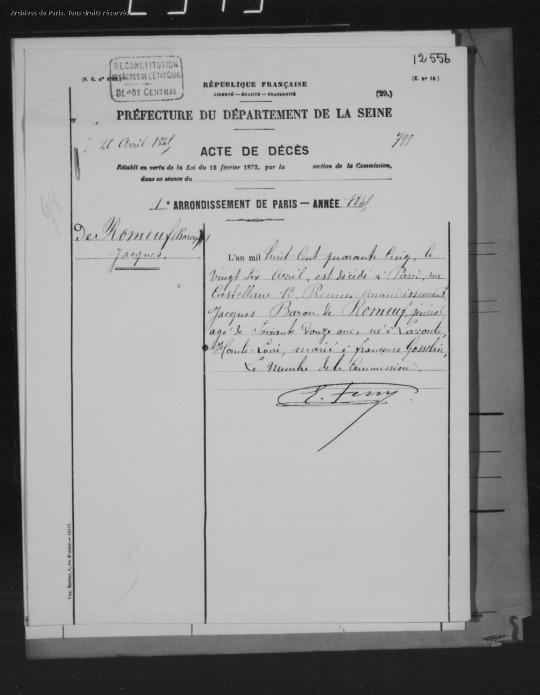

Paris Archives, État civil reconstitué (XVIe-1859), Cote 5Mi1 1330, p. 40-41. (10/03/2022)
#marquis de lafayette#la fayette#french history#french revolution#history#letter#24 days of la fayette#george washington#founders online#georges washington de lafayette#davoust#brune#murat#macdonald#dumas#napoléon#napoleon bonaparte#jean-louis romeuf#jacques-alexandre romeuf#jules germain cloquet#virginie de lafayette#adrienne de lafayette#adrienne de noailles#albert noailles#1766#1789#1792#1790#1797#1798
9 notes
·
View notes
Text
Today I watched Johnny Come Lately, a 1943 drama film directed by William K. Howard. A drifter who used to work as a reporter is saved from the press-gang for the crime of vagrancy by an elderly widow who runs a newspaper. Together they seek to undermine and overturn the stranglehold the corrupt mayor holds over the town. The story starts out in a typically sentimental way, with the elderly widow being a prim and proper yet kindhearted woman who makes a habit of helping give tramps a place to stay and a meal to eat, because she believes in doing right for right's sake. She’s short on money so she sells her prize possessions to the local pawn shop, who promise to take care of them for her. The newspaper's few employees expectedly comprise a motley group of quirky individuals. This could easily have been a bad film, but the saccharine beginning gives way to a more engaging story, with truly formidable villains who aren’t afraid to be bad or threaten the story’s heroes with worse. There are actually a few scenes of unexpected violence which add tension and excitement to the film. The production values are also high. It's not one of the greatest films I've ever seen, but for an enjoyable night in I recommend the film, which can be watched here.
I also watched the 1929 “proto-noir” drama film Thunderbolt, directed by Josef von Sternberg. A young woman is sought by the police for her connection to the high-profile bank robber Thunderbolt, who is called so because he can knock out men with a single punch, felling them like a strike of lightning. The young woman wishes to quit her connection with Thunderbolt and start living honestly with the young man she loves, but Thunderbolt refuses to give her up, and resolves to do away with the upstart young man. The film starts out at a brisk pace but slows down halfway through, and the bulk of the action in the film takes place in a death-row prison. My attention waned repeatedly during the film and I had to pause it several times to do something else and recharge, which I haven’t had to do for a while. Despite this, I wouldn’t say it’s a bad film, indeed it’s a rather compelling drama film, though it lacks the suspense of later, true noir films. That it was made in 1929 makes it one of the first talkies, and it was interesting the film and seeing how it compared and contrasted with the later noir films it preceded. All in all I would recommend the film. It can be watched here.
3 notes
·
View notes
Text






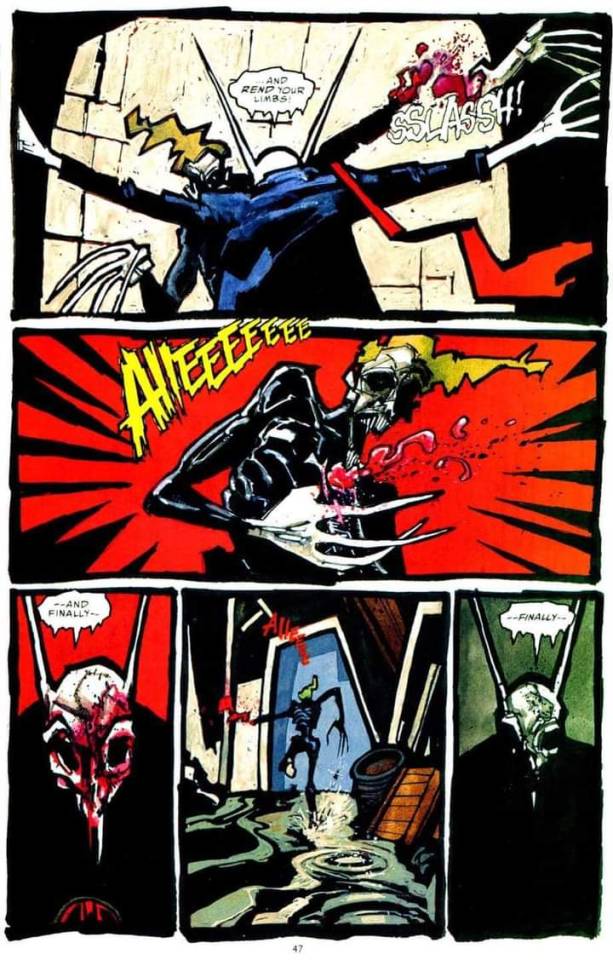


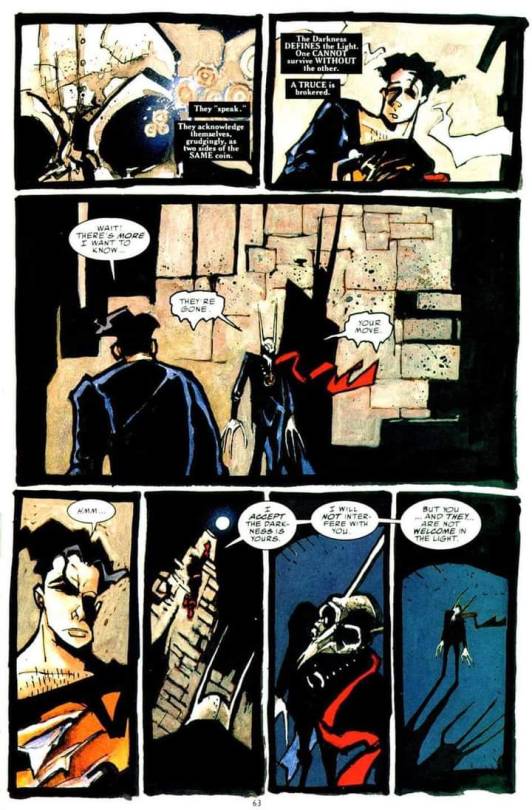
Batman: Nosferatu - In the late 1990s, the fantastical worlds of DC Comics’ Trinity (Batman, Superman, and Wonder Woman) and the abstract style of the early 20th century German artistic movement collided in three one shot Elseworlds by Jean-Marc Lofficier, Randy Lofficier, and Ted McKeever. Set on Earth-1927 within the DC Multiverse, the first of the trilogy, February 1997’s “Superman's Metropolis”, is inspired by Fritz Lang’s 1927 German Expressionist sci-fi film “Metropolis” and follows Clarc Kent-son trying to protect the grieving working class against evil scientist Lutor’s deadly vision for this City of Tomorrow. After Clarc’s Super-Man, with the help of Lois Lane, defeats Lutor and become the rulers of Metropolis, the follow up Elseworlds centered around this universe’s Dark Knight is released in March 1999’s “Batman: Nosferatu”.
This graphic novel is inspired by Robert Wiene’s 1920 German Expressionist horror film “The Cabinet of Dr. Caligari” starring Conrad Veidt (the real life inspiration for the creation of The Joker in 1940) and lightly influenced by F. W. Murnau’s 1922 film “Nosferatu: A Symphony of Horror“. As Clarc and Lois are bringing more unity to Metropolis, this progress is sneered at by Dr. Arkham who is conducting horrific experiments on Arkham Asylum patients to entertain and manipulate the wealthy. One patient include the murderous cyborg named the Laughing Man who does Arkham’s lethal bidding. When a Metropolis attorney named Dirk Gray-son investigates Dr. Arkham, Arkham has him killed by this universe’s Clown Prince of Crime. This tragedy leads his friend Bruss Wayne-son and his love interest Barbera Gord-son to look into the case themselves. Initially asking Clarc for help and being denied due to more pressing matters happening throughout the city, a trip to the asylum turns into Bruss being trapped and transformed into the nocturnal creature “Nosferatu”. In this form he kills the Laughing Man and attacks Dr. Arkham before being stopped by Super-Man. After a verbal and physical battle over Nosferatu’s presence in Metropolis, Super-Man comes to the conclusion that there needs to be both light and shadows to bring true balance to their city, making Bruss’ Nosferatu the new head of Arkham Asylum.
In 2003’s finale Elseworlds “Wonder Woman: The Blue Amazon”, inspired by German expressionist films like Josef von Sternberg’s “The Blue Angel” (1930), you learn of the origin of Metropolis (a terraformed Mars inhabited by the survivors of Earth after its destruction courtesy of pollution.), the creation of Diana, and her journey into becoming the Wonder-Woman who takes on the Amazonian Cheetah alongside Super-Man and Nosferatu aka the Batman.
4 notes
·
View notes
Text
The operational objectives of machine learning are particularly important, but machine learning is not merely a functional apparatus. The mechanisation of human life, as expressed by machine learning, exemplifies an obsession with the racialised principles of social order. It is here, at the intersection of race and governance, that machine learning gains its omnipotence. This is to say that machine learning gains relevance as the ceremonial placeholder for the white imaginary, whereby it gains power through the epistemic reinforcement of racial grouping.
Ramon Amaro. 2022. The Black Technical Object: On Machine Learning and the Aspiration of Black Being. London: Sternberg Press.
0 notes
Text

From Nathalie Du Pasquier's RO-SÉ – A Book as a Bridge
Sternberg Press 2022
0 notes
Text
Devrimcinin Anahtar Kitabı – 1869 – Sergey Neçayev
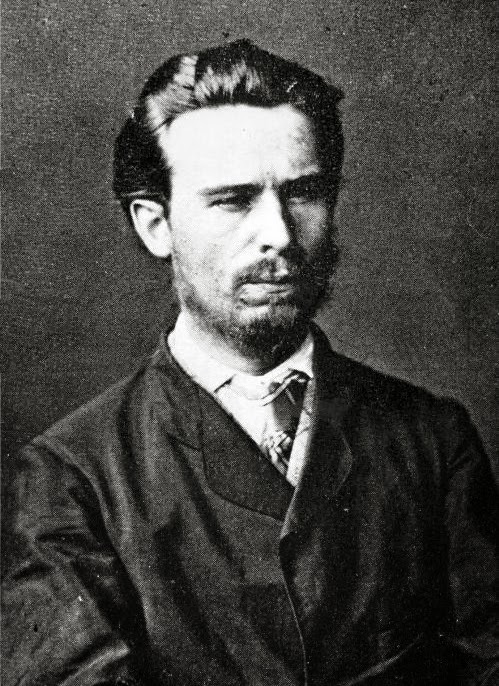
Sergey Genndiyeviç Neçayev’in (20 Eylül 1847 Ivanovo – 21 Kasım 1882 Peter-Paul Cezaevi) Devrimcinin Anahtar Kitabı başlıklı bu metni Hillary Sternberg ve Lydia Bott’un ilk kez “Daughter of a Revolutionary” (Bir Devrimcinin Kızı, Alcove Press, 1974) içinde yayımlanan İngilizce çevirilerinin Haziran 1989’da üç yayınevinin (Violette Nozieres Press, Active Distribution ve A.K.Press) ortaklaşa Londra’da yaptığı edisyonundan (Catechism of the Revolutionist, Sergei Nechayev) dilimize aktarılmıştır.
I. Genel Örgüt Kuralları
(1) Örgütün yapısı bireysel güvene dayanır.
(2) Örgütleyici, tanıdıkları arasından (kendisi de dahil) beş ya da altı kişi seçer ve her biriyle tek tek konuştuktan ve her birinin rızasını sağlama bağladıktan sonra onları biraraya getirir ve kapalı bir hücreyi oluşturur.
(3) Örgütün işleyişi meraklı gözlerden gizlenir, bu nedenle hücrenin tüm bağlantıları ve etkinlikleri herkeslerden gizli tutulur, tabii kendi üyeleri ve merkez hücre hariç, hatta örgütleyici, merkez hücreye belirli günlerde eksiksiz raporlar sunar.
(4) Üyeler, hazırlık çalışmasının yapılması gereken bölge, toplumsal sınıf, ya da çevre hakkındaki bilginin temel alınmasıyla oluşturulmuş belirli bir plan dahilinde uzmanlaştıkları konuda görevlerini üstlenirler.
(5) Bir örgüt üyesi hemen kendi etrafında ikinci dereceden bir hücre kurar. Bu yeni kurulan hücreyle ilişkisi içinde önceki hücre bir merkez hücre rolündedir, ilk örgütün tüm üyeleri de (ya da, ikinci dereceden hücrelerle ilgili olarak düşünüldüğünde, örgütleyiciler) kendi hücrelerinde sağlanan istihbarat toplamını kendilerinden bir üstteki hücreye sunarlar.
(6) Dolaylı olarak da eşit derecede yönetilebilecek tüm şu insanlar konusunda, yani, diğer insanlar arasında, dolaysız yöntemlerle örgütlenmeme ilkesi en yüksek titizlikle yerine getirilmelidir.
(7) Örgütün genel ilkesi ikna etmeye kalkışmak değildir, yani, bir kimseyi kendine bağlamaya çalışmak değil, hali hazırda gözönünde bulunan kuvvetleri birbiriyle birleştirmek, hedefiyle ilgisi olmayan tüm tartışmaları bertaraf etmektir.
(8) Üyeler örgütleyicilere bağımlı hücrelerin işiyle ilişkisiz sorular sormazlar.
(9) Üyelerin örgütleyiciyle tüm samimiyeti davanın başarıyla ilerlemesi temelindedir.
(10) İkinci dereceden hücrelerin biçimlenmesi sırasında, daha önce örgütlenmiş hiicreler onlarla ilişkili olarak merkezler haline gelirler ve toplumun düzenlemeleri ile içinde yer aldıkları bölgedeki etkinliklerinin ayrıntılı bir programıyla sunulurlar.
Bölüklerden Oluşan Şebekenin Genel ilkeleri
(1) Bölüklerin amacı örgütün çalışmalarının ve ortak davanın gizliliğinin ekstra bir garantisi olarak kullanımlarının bağımsızlığını ve özerkliğini sağlamaktır.
(2) Bu bölükler öncelikle komitenin onayıyla ve şebeke tarafından yetki verilmiş iki veya üç kişiden oluşurlar. Örgütün genel ilkeleri temelinde, yalnızca, komitenin görüşünce gereksinimlerini tam olarak karşılayan hücrelerden bir grup seçerler. Şebeke ile bağlantı örgütleyici aracılığıyla kurulur.
(3) Hücreler arasından bir bölüğün üyeliğine seçilen kişiler ilk toplantıda: a)kararlaştırılmış şekillerde, kollektifçe, üstlerinin sesine tam bağlılıkla eyleyeceklerine ve bölüğü sadece komitenin talimatları doğrultusunda daha derin saflara katılmak amacıyla terk edeceklerine; b)aynı zamanda dış dünyayla her türlü ilişkilerinde zihinlerinde yalnızca toplumun iyiliğini taşıyacaklarına, ant içerler.
(4) Kişiler yalnızca birkezliğine bir bölüğün üyeliğine seçilebilirler. Rakam altıya ulaştığında bölük komitenin talimatlarıyla gruplara bölünür.
(5) Kırtasiye işinin sorumluluğunu almak için, raporların derlenmesi için, komite üyelerinin ve tüm bölükle ilgili diğer temsilcilerin kabulü ve atılması için bir kişi beraberce seçilir. Aynı kişi belgeleri ve demirbaşları korur ve adresleri elde tutar.
(6) Diğer üyeler hazırlık çalışmalarını belirli bir sınıfta ya da çevrede yürütme görevini üstlenirler ve genel ilkeler uyarınca örgütlenmiş kişiler arasından kendilerine yardımcılar seçerler.
(7) Genel ilkelere göre örgütlenmiş tüm kişiler toplumun ereğine varması amacıyla gerekli girişimlerde bulunmak için araçlar ya da ifadeler olarak görülürler ve kullanılırlar. Bu nedenle bölüğün yerine getireceği tüm işlerde bu iş ya da girişim için yapılan planın ana yapısı yalnızca bölük tarafından bilinmelidir; işi yerine getiren kişiler hiçbir durumda işin gerçek doğasını bilmemelidirler, fakat yalnızca kendi paylarına düşen parçalarını ve ayrıntılarını bilmelidirler. Coşkularını harekete geçirmek için işin doğasını yanlış ışıktan yansıtmak yaşamsal önemdedir.
(8) Üyeler tasarladıkları girişimlerin planlarını komiteye bildirirler ve ancak komitenin onayından sonra uygulamaya geçebilirler.
(9) Komitenin önerdiği bir plan anında uygulanır. Komitenin bölüğün gücünü aşan taleplerde bulunmasını önlemek için, bölüğün durumuna dair olabildiğince titiz ve kusursuz bir dosya bölüğün komiteyle bağlantı kanallarından aktarılır.
(10) Bir bölük bağımlı hücreleri teftiş etmek ve onları yeni örgütler kurmak üzere yeni bölgelere sevk etmek için üyelerini gönderebilir.
(11) Finansal kaynaklar sorunu son derece önemlidir:
a) üyeler ve, sempatizanlardan sözlü olarak dile getirilmiş bağışlar miktarında doğrudan haraç toplamak;
b) sempatizan olmasalar da tüm tabakalarda yer alan insanlardan olası bahanelerle dolaylı bir haraç toplama;
c) farklı amaçlar için düzenlenmiş süsü vererek konserler, geceler düzenlemek;
d) özel bireylerle ilgili çeşitli girişimler; bölüğün, gücünü aşan başka daha hırslı yöntemler kullanması yasaktır, ve yalnızca komitenin talimatları doğrultusunda bölük böyle bir planı yürürlüğe koyabilir;
e) toplanan paraların üçte biri komiteye gitmelidir.
(12) Bir bölüğün etkinliklerine başlaması için gerekli olan koşullar arasında şunlar yer alır:
a) hücre evlerinin oluşturulması;
b) seyyar satıcılar, fırıncılar vb. Çevrelere zeki ve pratik adamların sızdırılması;
c) şehir dedikoducularından, orospulardan ve dedikoduların toplandığı ve yayıldığı diğer özel yerlerden bilgi;
d) polisten ve eski katiplerden bilgi;
e) toplumun suçlu denilen öğeleriyle ilişkilerin kurulması;
f) üst tabakadan insanlar üzerinde kadınlar aracılığıyla etki kurmak;
g) tüm olası biçimlerde sürekli propaganda.
Bu kopya dolaşıma sokulmaz ve bölükte saklanır.
II. Devrimciye Kılavuzluk Etmesi Gereken İlkeler
Devrimcinin Kendisine Karşı Tutumu
(1) Devrimci adanmış bir insandır. Kişisel çıkarları, işleri, duyguları, bağlılıkları, kişisel eşyaları, hatta kendi adı bile yoktur. Ondaki herşey, biricik tek bir çıkar, tek bir düşünce, tek bir tutku –devrim tarafından özümlenmiştir.
(2) Varlığının en derinliklerinde, yalnız sözlerde değıl ama eylemlerinde de, uygar düzenden ve tüm o yasalarıyla, töreleriyle, toplumsal uzlaşmalarıyla ve etik kurallanyla kültürlü dünyadan bütün bağlarını koparmıştır. Bu dünyanın amansız bir düşmanıdır, ve onun içinde yaşamayı sürdürüyorsa eğer bu sadece onu daha etkili bir biçimde yıkabilmek içindir.
(3) Devrimci, doktrinciliği tümüyle horgörür ve gelecek kuşaklara bırakmak üzere dünya bilimlerini reddetmiştir. Bildiği yalnızca tek bir bilim vardır, yoketmek01 bilimi. Bu ereğe, yalnızca bu ereğe varmak için, mekanik, fizik, kimya ve belki tıp çalışacaktır: insanlar, ıraları ve durumları, ve mevcut toplumsal düzenin tüm olası katmanlarındaki bütün özellikleri. Biricik ve sabit hedefi bu pespaye düzenin derhal yokedilmesidir.
(4) Kamuoyunu horgörür. Tüm dışavurumları ve ifadeleriyle varolan toplumsal etiği horgörür ve ondan iğrenir. Onun için, devrimin zaferine yardım eden herşey ahlakidir. Devrimin yolunu kesen herşeyse ahlakdışıdır ve suçtur.
(5) Devrimci adanmış bir insandır, devlete ve genel olarak eğitimli ve ayrıcalıklı tüm topluma karşı acımasızdır; ve onlardan da hiçbir merhamet beklememelidir. Onlarla devrimci arasında, ilan edilmiş ya da edilmemiş, sürekli ve uzlaştırılamaz bir ölüm kalım savaşı vardır. Devrimci kendisini işkenceye dayanabilecek şekilde disipline etmelidir.
(6) Kendisine karşı sert olduğu gibi, başkalarına karşı da sert olmalıdır. Her türlü şefkat belirtisi, akrabalık, dostluk, sevgi, minnettarlık hatta onur gibi yumuşatıcı duygular devrimci davaya duyulan tek amaçlı ve soğuk bir tutkuyla tamamen söndürülmelidir. Devrimci için yalnızca tek bir doyum, tek bir avunma, tek bir sevinç ve tek bir kıvanç vardır -devrimin başarısı. Gece gündüz tek bir düşünceyi tek bir amaca taşımalıdır -amansız yoketme eylemi. Bu amaç uğruna soğukkanlıca ve yorulmadan çalışırken, bizzat kendisinin ölümüne ve amacın gerçekleşmesini engelleyen herşeyi kendi elleriyle yoketmeye hazırlıklı olmalıdır.
(7) Gerçek devrimcinin doğasında herhangi bir romantizme, herhangi bir duygusallığa, kendinden geçmeye veya esrikliğe yer yoktur. Kişisel öç ya da düşmanlık için de yer yoktur. Zihninin değişmez bir durumu haline gelen devrimci tutku, her an soğuk hesaplamalarla içiçe geçmelidir. Her zaman ve her yerde kendi kişisel eğilimlerinin gerektirdiği değil, devrimin genel çıkarlarının gerektirdiği kişi olmalıdır.
Devrimcinin Devrimdeki Yoldaşlarına Karşı Tutumu
(8) Devrimci yalnızca pratikte onun kadar devrimci olduğunu göstermiş birisine sevgiyle yaklaşır ve onu dostu kabul eder. Dostluğunun kapsamı da, yoldaşlarına karşı yükümlülükleri ve bağlılığı da, yalnızca yoldaşlarının devrimci yıkımın pratik işlerindeki yararlılıklarının derecesine göre belirlenir.
(9) Devrimcilerin arasında dayanışmanın gerekliliği apaçıktır. Orada devrimci çalışmanın tüm sertliği bulunur. Devrimci kavrayış ve tutkunun aynı derecesini paylaşan bütün devrimci yoldaşlar, mümkün olduğunca, beraber tiim önemli meseleleri tartışmalı ve ortak kararlar almalıdırlar. Ancak, bu şekilde tasarlanmış bir planı yerine getirirken, herkes olabildiğince kendisine güvenmelidir. Bir dizi yıkıcı eylem gerçekleştirilirken, herkes kendi adına hareket etmeli ve (planın) başarısı için gerekmediği sürece yoldaşlarına yardım ve öneri için başvurmamalıdır.
(10) Her yoldaş kendi altında çok sayıda ikinci ve üçüncü ulamdan devrimciler bulundurmalıdır, bunlar da, grubun sırlarını ve adetlerini tümüyle bilmeyen yoldaşlardır. Onları devrimci bir sermayenin kendi hizmetine verilmiş ortak fonunun parçaları olarak görmelidir. Her zaman mümkün olan en yüksek yararı sağlamaya çalışarak sermayedeki kendi hisselerini en ekonomik biçimde kullanmalıdır. Kendisini de devrimci hedefe tahsis edilmiş bir sermaye olarak görmelidir; fakat grubun sırlarını ve adetlerini tümüyle bilen yoldaşların tam katılımı olmaksızın serbestçe elden çıkaramayacağı bir sermaye.
(11) Bir yoldaşın başı belaya girdiğinde, devrimci, o yoldaşın kurtarılmasının gerekip gerekmediğini kararlaştırırken, kişisel duygularıyla değil devrimci amaç için iyi olan açısından düşünmelidir. Bu nedenle, bir tarafta, devrimcinin yararlılığını, ve öbüründe de, onun kurtuluşu için harcanması gerekecek devrimci enerji miktarını tartmalı, ve hangisinin daha ağır çektiğini belirlemelidir.
Devrimcinin Topluma Karşı Tutumu
(12) Kendisini sözlerde değil ama eylemde kanıtlamış yeni bir üyenin kabulü, yalnızca herkesin onayıyla kararlaştırılabilir.
(13) Devrimci; devlet, sınıf, ve sözde kültür diinyasına salt onun hızlı ve toptan yıkımına inandığı için girer ve içinde yaşar. Eğer bu dünyanın herhangi bir öğesine karşı acıma duyuyorsa o bir devrimci değildir. Eğer yapabilirse, bir konumun, bir ilişkinin, ya da bu dünyanın bir parçası olan herhangi bir kişinin yokedilmesiyle yüzleşmelidir -herşey ve herkes onun için. eşit derecede tiksinçtir. Bu dünyada ailesi, arkadaşları, ve sevdiği olması onun için tümüyle kötüdür; eğer bu insanlar onu engelleyebiliyorsa o bir devrimci değildir.
(14) Amansız yıkımı amaçlarken, bir yandan da olduğundan başka biriymiş gibi yaparken, devrimci, toplumun içinde yaşayabilir ve hatta bazen yaşamalıdır. Devrimci her yere sızmalıdır: alt ve orta sınıfların arasına, tecim-evlerine, kiliseye, zenginlerin konaklarına, bürokrasi dünyasına, askeri ve yazınsal dünyaya, Uçüncü Şubeye (Gizli Polis), ve hatta Kışlık Saraya.
(15) Tüm bu bozuk toplum çeşitli ulamlara ayrılmalıdır: ilk ulam derhal ölüme mahkûm edilecekleri içerir. Devrimci topluluk, devrimci amacın ilerleyişine verebilecekleri zararı ve ortadan kaldırılacaklarını ölçü alarak, bu insanların bir listesini hazırlamalıdır.
(16) Bu listelerin hazırlanmasına ve yukarıda değinilen düzenlemenin kararlaştırılmasına kılavuzluk eden ilke, ne kişinin bireysel alçaklık eylemleri, ne de toplum veya halk arasında kışkırttığı nefret olmalıdır. Bu alçaklık ve doğurduğu nefret, yine de, gerekli kişisel isyanı teşvik ettiği sürece, bir noktaya kadar yararlı olabilir. Kılavuzluk eden ilkeyse kişinin ölümünün devrimci amaca ne denli hizmet edeceğinin, yeterince geri dönüp dönmeyeceğinin ölçüsü olmalıdır. Bununla beraber, ilk elde özellikle devrimci örgüte zararlı olan herkes, ani ve şiddetli ölümleri hükümet katında en yüksek korkuyu uyandıracak olanlar, ve ölümleriyle hükümeti en zeki ve enerjik figürlerinden yoksun bırakıp, onun sağlamlığını gölgeleyecekler ortadan kaldırılmalıdır.
(17) İkinci ulam; sırf hayvanca davranışları insanları kaçınılmaz isyana süreklediği için ölüm fermanı geçici olarak ertelenenleri içerir.
(18) Üçüncü ulam üst tabakadan sığırlar sürüsüne ya da hiçbir özel zekaya, enerjiye sahip olmayan ancak konumları gereği; bolluğun, bağıntıların, nüfuzun ve iktidarın tadını çıkaranlara aittir. Her olası yolla ve biçimle sömürülmelidirler; ağa düşürülmeli ve yanıltılmalıdırlar, ve kirli sırları hakkında öğrenebildiğimiz kadarını öğrendiğimizde, köleleştirilmelidirler. İktidarları, nüfuzları, bağıntıları, zenginlikleri ve enerjileri böylece tükenmez bir hazine odası ve çeşitli girişimlerimiz için etkili bir yardım haline gelir.
(19) Dördüncü ulam siyasi olarak istekli kişileri, çeşitli anlayışlardaki özgürlükçüleri içerir. Sayelerinde, onların kendi programlarına uygun davranarak, gerçekte onları kontrol altında tutarken onları körce izliyormuşuz izlenimi yaratarak komplolar kurabiliriz. Bütün sırları öğrenilmeli ve geri dönüşsüz biçimde bulaşana dek en aşırı derecede tehlikeye sokulmalıdırlar, böylece devletin düzenini bozmak için çalıştırılabilirler.
(20) Beşinci ulam doktrincileri, komplocuları, devrimcileri, yazılı veya sözlü boş nutuklara kendini kaptırmış olanları içerir. Sürekli, pratik içerikli şiddet bildirileri yapmaya teşvik edilmeli ve zorlanmalıdırlar. Bunun sonucunda çoğunlukları hiçbir iz bırakmadan kaybolur ve gerçek devrimci kazanım az bir kısımlarından sağlanır.
(21) Altıncı ve önemli bir ulam da, kadınlardan oluşanıdır. Üç ana tipe ayrılmalıdırlar: Birincisi, şu önemsiz, düşüncesiz, yavan, aynı üçüncü ve dördüncü ulamdan erkekler gibi kullanabileceğimiz kadınlardır; ikincisi, ateşli, yetenekli ve sadık, ancak henüz bir gerçek, soğukkanlı ve pratik devrimci anlayışı kazanmadıkları için bizden olmayan kadınlardır, bunlar beşinci ulamdaki erkekler gibi kullanılmalıdırlar; ve son olarak, tümüyle bizimle olan kadınlar vardır, yani, grubun sırlarını ve adetlerini tümüyle bilen ve programımızı eksiksiz kabul edenler. Bu kadınları, hazinemizin en değerlileri olarak görmeliyiz, yardımları olmasaydı hiçbir şey yapamazdık.
Topluluğumuzun Halka Karşı Tutumu
(22) Topluluğumuzun tek bir emeli vardır -halkın, yani sıradan emekçilerin, tam olarak özgürleşmesi ve mutluluğu. Ancak, özgürleşmelerinin ve mutluluğun sağlanmasının ancak tümüyle yıkıcı bir halk devrimiyle gerçekleşebileceğini bilerek, topluluğumuz tüm gücünü ve tüm kaynaklarını bu sıkıntıların ve kötülüklerin kuvvetlenmesini ve artışını sağlamak için kullanacak, sonunda halkın sabrını kıracak ve onu bir halk devrimine sürükleyecektir.
(23) “Halk Devrimi” derken topluluğumuz klasik Batılı modele uygun düzenli bir hareketi kastetmiyor –bu hareket, mülkiyet nosyonuyla ve sözde uygarlık ve ahlakın geleneksel düzeniyle her zaman kısıtlanmış, şimdiye dek kendisini yalnızca bir siyasi yapıyı yıkıp yerine yenisini getirmekle sınırlandırmış ve böylece sözde devrimci devleti yaratmaya çalışmıştı. Halkı kurtarabilecek tek devrim tüm devlet sistemini kökünden söküp atan ve Rusya’daki tüm rejimin ve sınıfların tüm devlet geleneklerinin kökünü kazıyacak olan devrimdir.
(24) Bu nedenle topluluğumuzun halka hiçbir örgütlenmeyi yukarıdan dayatmak tasarısı yoktur. Her türlü gelecek örgütlenmesi hiç kuşkusuz halkımızın hareketinin ve yaşamın içinde biçimlenecektir, ancak bu daha çok gelecek kuşaklar için bir görevdir. Bizim görevimiz yıkımdır; korkunç, tam, evrensel, ve acımasız bir yıkım.
(25) Bundan dolayı, halka yaklaşırken, herkesten çok günlük yaşamın, Moskova’da devlet iktidarının daha ilk kurulduğu günden beri, yalnızca sözlerde değil eylemde de, devletle doğrudan veya dolaylı bağlantısı olan herşeye karşı, soyluluğa karşı, bürokrasiye karşı, papazlara karşı, esnaflar loncasının dünyasına karşı ve eli sıkı köylü vurguncularına karşı protest davranmaktan geri durmayan öğeleriyle ellerimizi birleştirelim. Ve Rusya’aki biricik hakiki devrimciler olan cesur haydutlar dünyasıyla da ellerimizi birleştirmeliyiz.
(26) Bu dünyayı tek bir yenilmez ve tümüyle yıkıcı kuvvetle örmek –tüm örgütümüzün, komplomuzun, ve görevimizin amacı budur.
01 ‘yıkmak, yoketmek, yıkım’ sözcükleri ‘destroy, destruct, destruction’ı karşılamak için değişmeceli olarak kullanılmıştır –çn.
Dokümanın Aslı: http://www.geocities.com/CapitolHill/Senate/7479/necayevmetin.htm
Devrimcinin Anahtar Kitabı (1869), Sergey Neçayev, türkçesi:süreyyya evren, KARAŞIN, fotokopi-betik 1, İstanbul, Nisan 1997.
0 notes
Quote
On August 7, 1999, Tom McCarthy founded the International Necronautical Society (INS) with a public presentation of the “Founding Manifesto,” a touchstone that would inform the organization’s proceedings for years to come. Composed of official committee members and illicit “agents,” the INS harks back to early twentieth-century avant-gardes, producing declarations, reports, public hearings, broadcasts, and research documents, as well as orchestrating more covert media infiltrations, all governed by the objective, set out “Founding Manifesto,” of mapping, entering, and occupying the space of death through literature, philosophy, culture, and technology.
The Mattering of Matter is a collection of INS documents produced between 1999 and 2010. This edited selection of texts reflects the INS’s development, through both internal bureaucratic changes and its ever-growing repertoire of references, all of which work towards their ultimate goal of constructing a necronautical “craft” with which to propound and escalate the overall INS project.
The Mattering of Matter – Sternberg Press
0 notes
